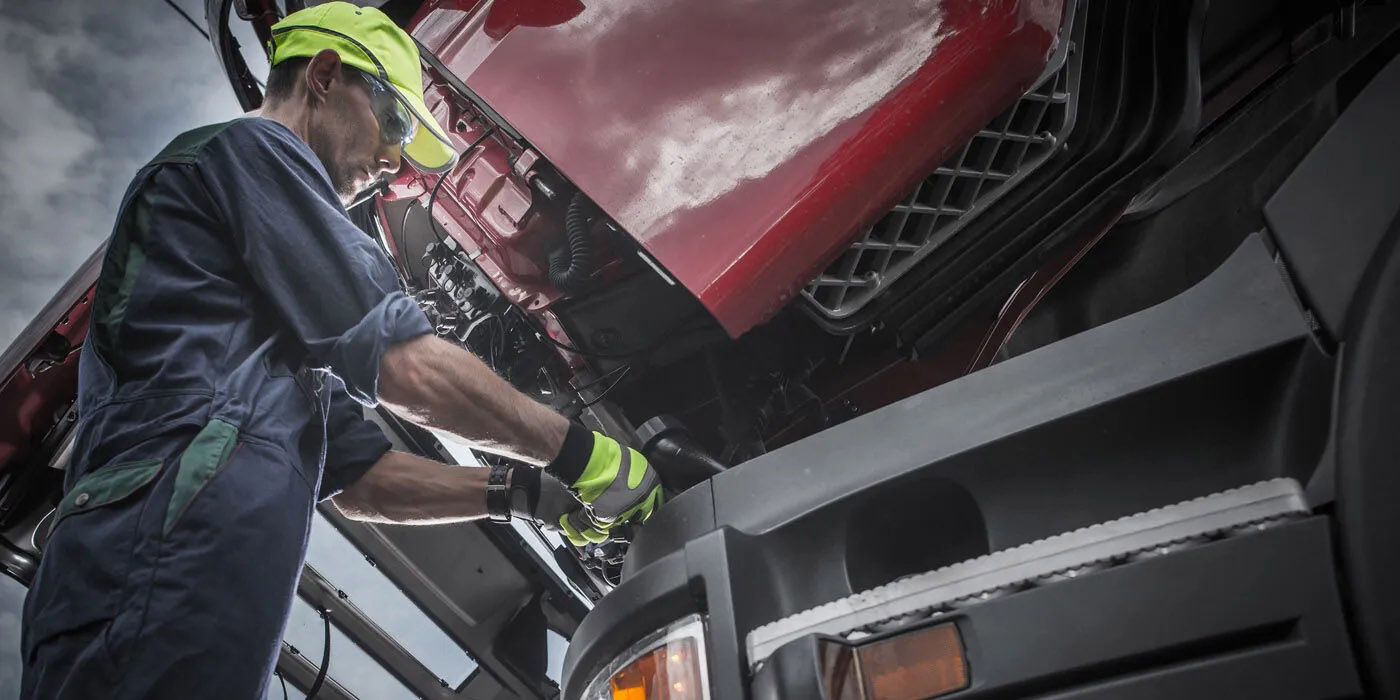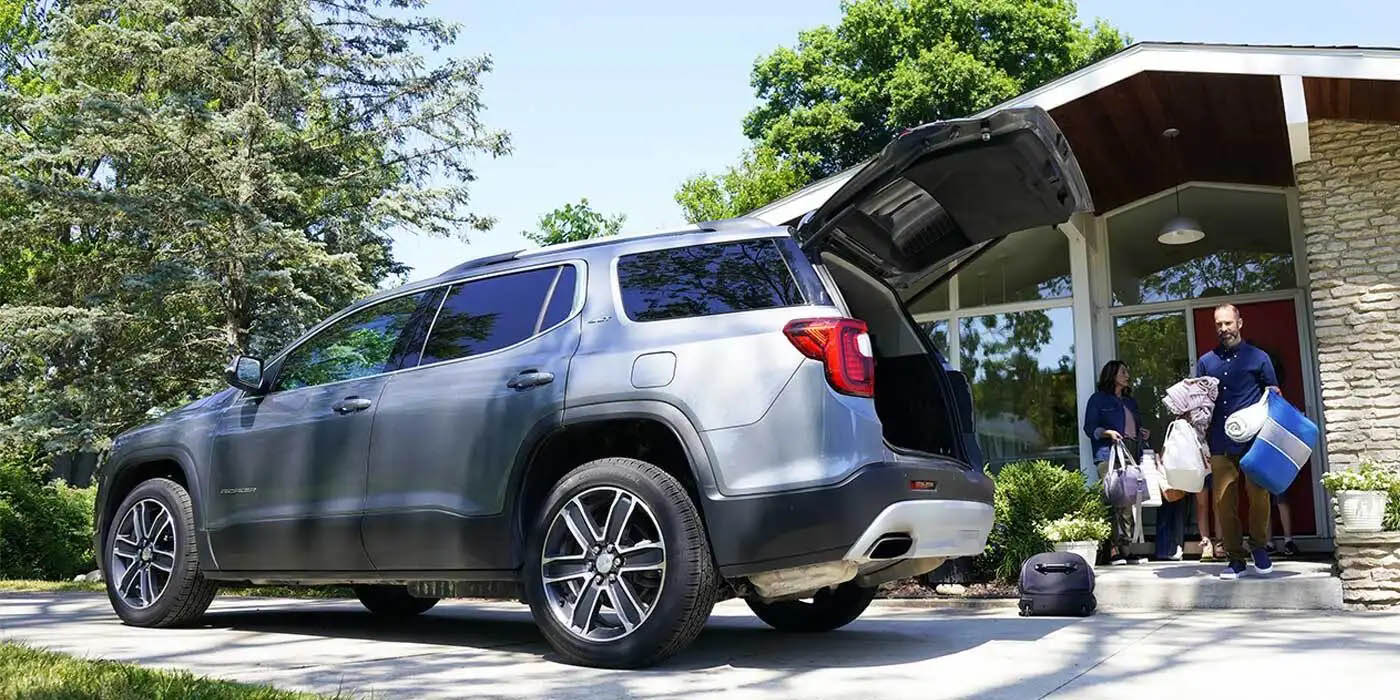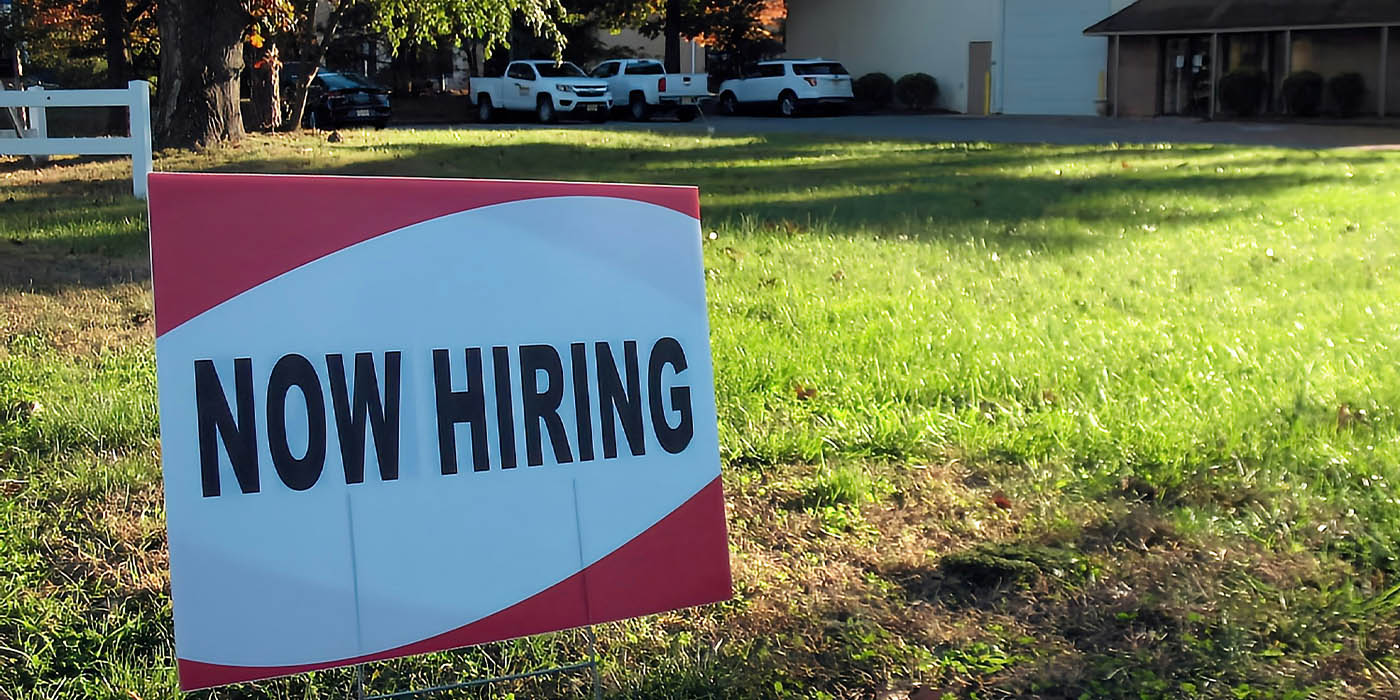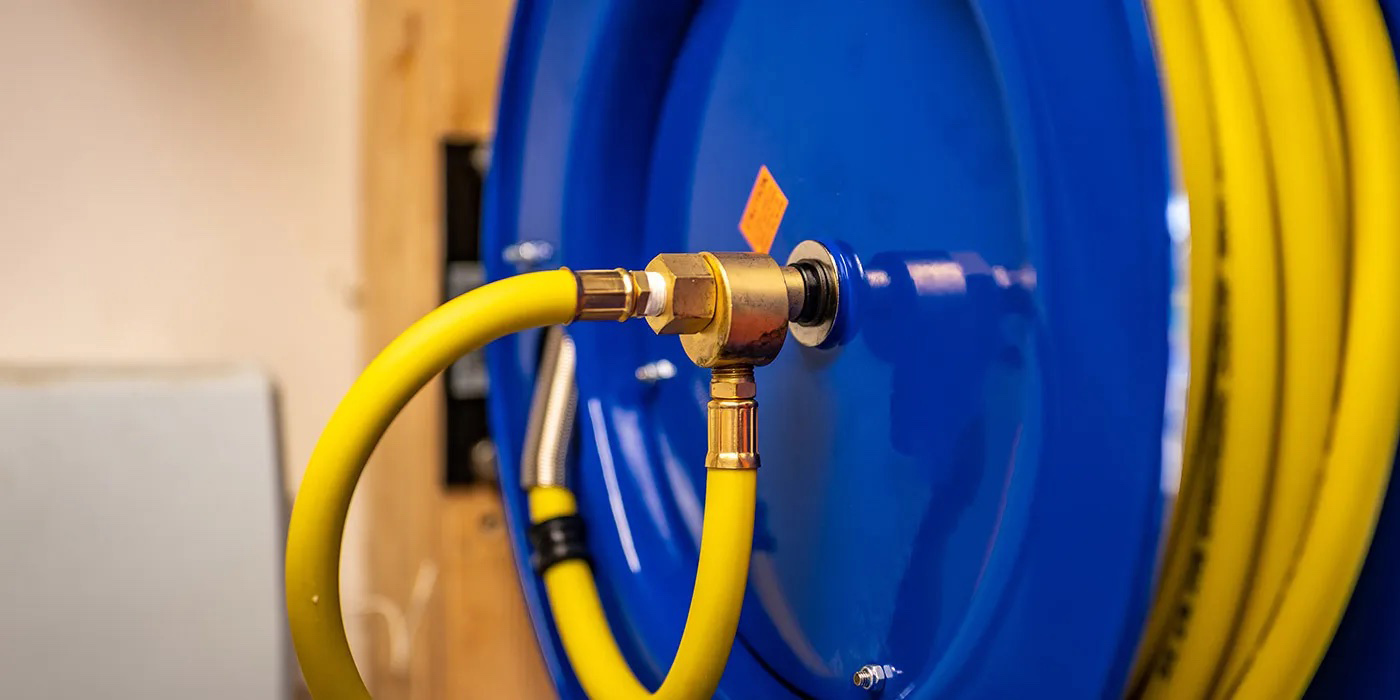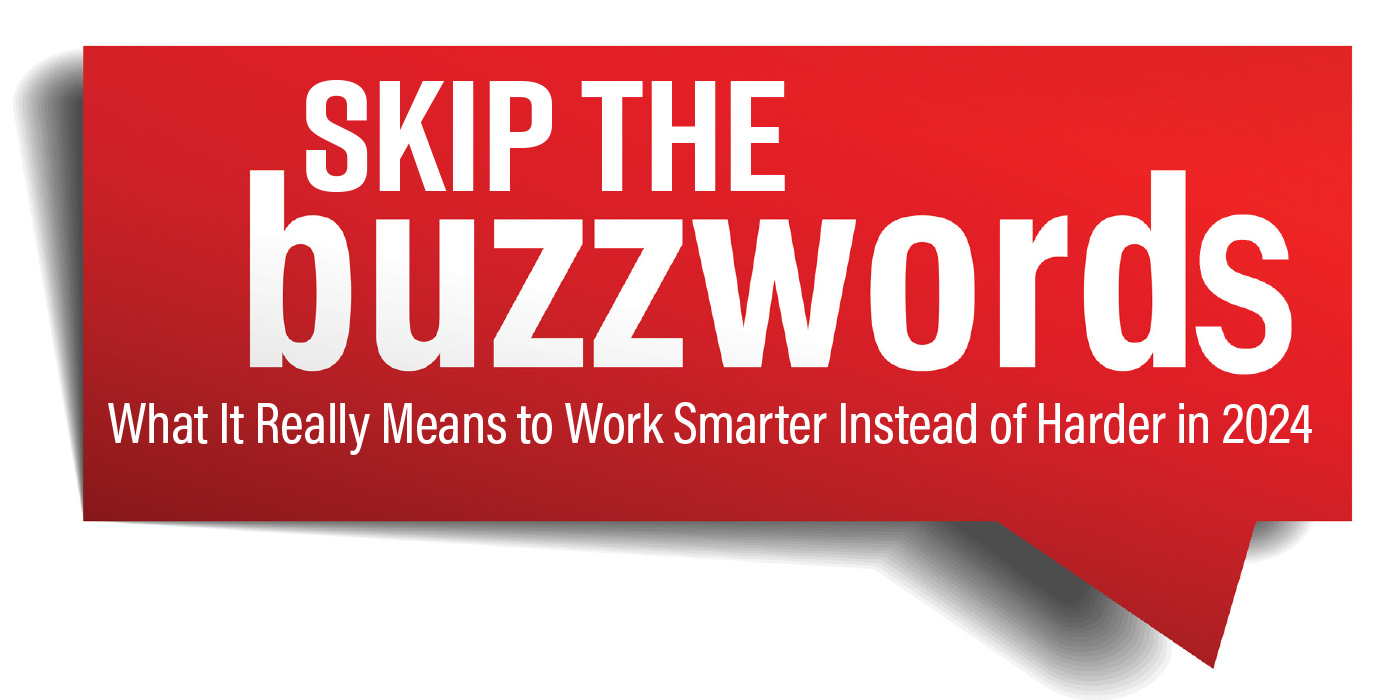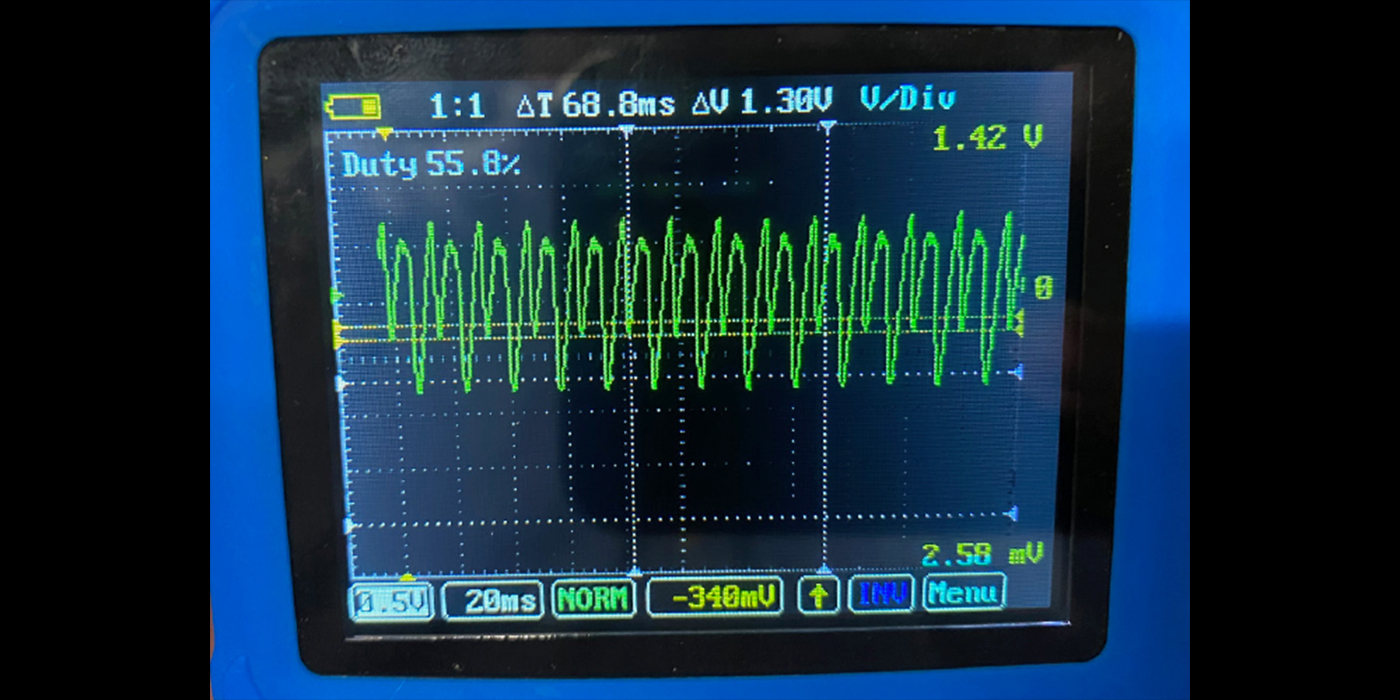By Tim Fritz
Contributing Editor
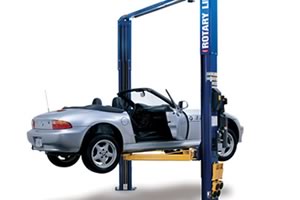 As the centerpiece of the service bay, lifts are critical to the productivity and profitability of any automotive repair shop. A lift that’s properly matched to the job at hand will let technicians work more efficiently, for greater profitability. If the lift is well-made, it will provide enhanced productivity for years to come.
As the centerpiece of the service bay, lifts are critical to the productivity and profitability of any automotive repair shop. A lift that’s properly matched to the job at hand will let technicians work more efficiently, for greater profitability. If the lift is well-made, it will provide enhanced productivity for years to come.
On the other hand, a lift that is slow or time-consuming to set up, that can’t pick up all the vehicles a shop services, that can’t be used for the types of service offered or that needs frequent repair is a drain on shop time and money.
If you are considering a shop expansion or are looking to replace or upgrade an older lift, don’t automatically order the first two-post lift you see. Instead, spend a little time evaluating the lift options to find the best match for your facility.
A Team Decision
Your lift search should start with an examination of your business today and your plans for the future. Meet with your managers and technicians to discuss the shop’s lifting needs. Find out what they think about current lifts and potential improvements. Are there other styles of lifts or certain adapters they think would improve productivity or let them perform work they can’t do now? Next, answer the following questions:
1. Should we convert a flat bay to a more productive, greater revenue-generating bay by adding a lift?
2. How much bay space is available for the new lift? Consider fore and aft, side-to-side and ceiling height.
3. What types of vehicles will be lifted? The lift must be able to accommodate the vehicles’ weight and height. Would you like to be able to service taller, heavier vehicles like delivery vans, SUVs and trucks? You may need a 12,000-lb. or 15,000-lb. capacity lift. Import specialists and other shops that service vehicles with low profiles will also want to make sure their lifts can properly access those vehicles’ pick-up points, possibly by using a lift with three-stage arms.
4. What type of service work will this lift be used for in the shop? You don’t want to have your technicians uncover needed service and then not be able to perform the repairs. For example, steering systems should be checked with the full weight of the vehicle on the wheels. In order to accomplish this, a drive-on, ramp-style lift is often required. Similarly, you will likely choose a different lift for quick service applications than for tire and brake work.
Bring In An Expert
Now that you have an idea of your shop’s lifting needs, it’s time to enlist the help of a lift distributor or manufacturer’s representative to help you sort out the advantages and disadvantages of each lift.
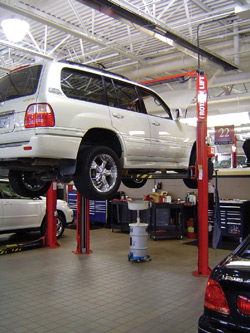
Ask the salesperson to visit your shop to get a better idea of your lifting requirements and layout. While at your shop, the sales representative should also look at the proposed installation area and alert you to any roadblocks you may encounter, such as overhead obstructions, wiring and air needs, the ability of your shop floor to handle the weight of the lift and building codes. Some lift manufacturers also offer free facility planning assistance to recommend lift selection and placement to maximize space and productivity.
When choosing a lift, be sure to ask about local parts and service availability. Most shops can’t afford to have a lift sitting idle for a month while waiting for parts to be ordered and for the manufacturer to send out a repairman.
Accessorizing Your Lift
There are a number of lift options and accessories available to improve productivity. For example, some two-post lifts have controls on both columns, saving technicians steps and time. Other options and accessories that could increase productivity include three-stage arms, integrated air and electric outlets, adapter racks, tool storage racks, multi-stage adapters, single-point locking release systems, wheel spotting dishes and easy-to-adjust arm restraints.
Evaluate which accessory package best meets your shop’s needs. It’s usually best to purchase all the accessories and adapters that you think your shop may need at the same time you buy the lift. You don’t want to find out a month later that you are losing business to another shop in the area because you don’t have the necessary equipment to complete the job.
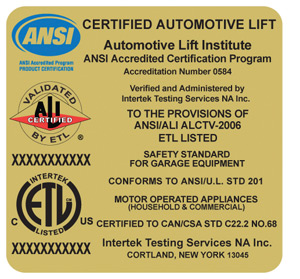
The Importance of Lift Certification
State and local building codes in every U.S. state, and Washington, D.C., require that all installed vehicle lifts be certified to meet ANSI/ALI ALCTV-2006 safety and performance standards. ANSI/ALI ALCTV-2006 is the recognized American National Standard governing the design, construction, testing and validation of vehicle lifts. The Automotive Lift Institute (ALI) developed the standard and runs a program for independent third-party testing and certification of lifts.
The ANSI/ALI ALCTV-2006 standard provides:
• General requirements for strength of all vehicle lift components;
• General requirements covering drive components, electrical components, control devices and speeds;
• Specific requirements for a wide variety of elements, including welding, runways, adapters, swing arms, load-holding devices, accessory equipment and other safety considerations;
• Quality assurance systems and procedures, testing and validation; and
• Requirements governing lift instructions and labeling.
Lifts that are certified to meet the standard wear gold certification labels. A directory of certified lifts is available from ALI at www.ali-directory.org.
Lift certification is voluntary. It is legal to sell uncertified lifts in the U.S., therefore, responsibility for buying and installing certified lifts rests with the customer.
“Now that all states require that any lift installed be certified to meet the ANSI/ALI standard, it is possible that a shop owner could buy a non-certified lift, but not be able to have it installed legally,” explains John Rylee, director of marketing for Rotary Lift. “In addition to risking having the lift tagged out of service at a subsequent shop inspection, installing a non-certified lift also puts technician productivity and safety at risk. For this reason, Rotary Lift and our distributors recommend looking for the gold label whenever you’re thinking about buying a new vehicle lift. Without that label, you have no guarantee that the lift meets accepted safety and performance standards.”
Make sure any lift you are considering has been properly certified. Once a lift has been installed, there is no way to get it certified. It is also important to note that if you are considering purchasing accessories to go with the new lift or to upgrade a lift you already own, you should make sure the accessories are certified, as well. Putting non-certified accessories on a certified lift will void the lift’s certification.



